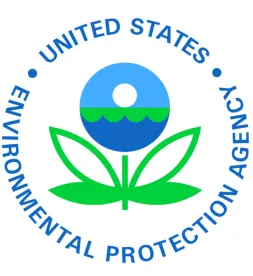On October 12, 2022, the Office of Environmental Justice and External Civil Rights of the U.S. Environmental Protection Agency (EPA) issued a Letter of Concern setting forth its initial analysis and recommendations in response to three NGO administrative complaints alleging that the Louisiana Department of Environmental Quality (LDEQ) and the Louisiana Department of Health (LDH) violated Title VI of the Civil Rights Act of 1964 (Title VI) and EPA’s nondiscrimination regulations at 40 C.F.R. Parts 5 and 7. Title VI prohibits intentional discrimination and acts that have a disparate impact on the basis of race, color, or national origin.
EPA’s investigation found “significant evidence” that the actions and inactions by LDEQ and LDH resulted in “disparate adverse impacts” on Black residents of St. John the Baptist Parish, St. James Parish, and the so-called Industrial Corridor, sometimes also referred to as “Cancer Alley.” EPA further raised concerns that LDEQ and LDH’s programs related to air pollution control and health risk mitigation and communication may have an adverse and disparate impact on Black residents that live or attend school near a Denka facility, a proposed Formosa facility, and in the Industrial Corridor. To address these issues, EPA recommended that LDEQ and LDH conduct multiple cumulative impact analyses, implement a formal environmental justice (EJ) process, and establish limits for future Industrial Corridor Air Permits.
Although the Letter of Concern was preliminary and not a final agency action, its impacts likely will be far-reaching for industry. Some of the key takeaways are:
-
Title VI will serve as a powerful mechanism for challenging state environmental agency permitting decisions and implementation of environmental programs going forward -- even when at their core, those programs and permits implement federal standards and have been authorized by EPA for decades. To date, EPA’s focus on EJ and Civil Rights has centered on issuing agency guidance in memoranda, interim permitting FAQs, and legal “toolkits.” This decision, together with recent proposals to deny a SIP, show that EPA is serious about its application of that guidance. Industry should now be prepared to supplement their permit applications by addressing considerations grounded in Title VI.
-
EPA’s new tools, guidance, and scientific findings will be used to evaluate permits and EJ risks. Throughout the Letter, EPA references the EJSCREEN, the NATA, several controversial IRIS risk values for ethylene oxide and chloroprene, and its recent interim permitting guidance as the basis for its findings – even though none of these have been subject to judicial review and all are non-binding guidance.1 Industry should be familiar with these tools and guidance and consider how EPA and NGOs may evaluate their permits and projects.
-
EPA’s view of EJ mitigation is open-ended. EPA’s recommendations are significant in their scope and entail relocating a school, hiring a professional risk communicator, undertaking extra-regulatory public risk meetings and broad cumulative pollutant impact assessments, and developing “regional” pollutant standards for carcinogens. In evaluating specific facility risks, industry should consider a broad range of opportunities to offer as potential solutions.
The legal underpinnings of EPA’s Letter and its recommendations are debatable and will undoubtedly be subject to challenge, but the new normal for permitting under the Biden Administration has been made clear. Industry, especially those with pending air permit applications, renewals, or new projects, should account for EJ considerations and impacts well in advance and as an integral aspect of their substantive technical analysis and timelines for implementation. Find additional detail on the Letter of Concern here.
Roy Prather, Julius Redd, Bina Reddy, Michael Vitris, and Brett Miller also contributed to this article.
FOOTNOTES
1 EJScreen is an environmental justice mapping and screening tool that provides EPA with a nationally consistent dataset of environmental and demographic indicators that the agency uses as a preliminary step when considering EJ in certain situations. The National Air Toxics Assessments (NATA) or AirToxScreen is designed by EPA as a screening tool for state and local governments to identify pollutants, emission sources, and potential health risks. EPA’s Integrated Risk Information System (IRIS) develops human health assessments on certain chemicals to provide information on a chemical’s hazards and quantitative toxicity values for cancer and non-cancer health effects.








 />i
/>i

